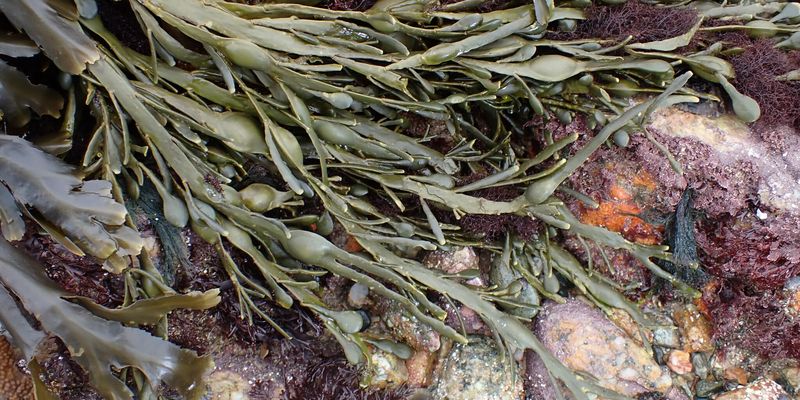Data use
Farming seaweed to feed, power and save the planet
Published 2/13/2023
Study explores the potential for large-scale seaweed cultivation to advance sustainable development goals and provide environmental and socio-economic benefits through a carbon-sequestering blue economy

Is it possible that large-scale seaweed farming could simultaneously reduce agricultural land conversion, mitigate greenhouse gas emissions and provide an economically valuable alternative source of food, animal feed and biofuels?
In this study, researchers first estimated the global cultivation potential by modelling the distribution of 34 seaweed species based on occurrence data from GBIF, the Atlas of Living Australia (ALA) and the Ocean Biodiversity Information System (OBIS) combined with a suite of spatially explicit oceanographic data layers. Using existing literature, the authors then reviewed the potential and sustainability for this suite of species to be produced for human food, livestock feed and biofuel conversion.
Informed by these findings, they modelled different scenarios of impact of seaweed substitution on terrestrial agriculture and global sustainability, focussing on food, feed or biofuel, both separately and combined. They also considered a special scenario of supplementing livestock diets with a specific seaweed taxon (Asparagopsis), which reduces methane production.
The distribution models found ~650 million hectares (Mha) of ocean suitable for seaweed cultivation—roughly three times the size needed to satisfy the demands of all main scenarios combined.
In the food scenario alone, in which seaweed constituted 10 per cent of global diets, as many as 110 Mha of natural land could be spared, also reducing emissions by more than a billion tonnes of CO₂ per year.
Supplementing just 0.5 per cent of ruminant diets with Asparagopsis would have the potential of mitigating CO₂-equivalent emissions by around 2.6 billion tonnes per year, requiring only a tiny fraction of sea area compared to all other scenarios. This represents 7.5 per cent of global emissions—equivalent to all carbon emissions from fossil fuels in India—in 2021.